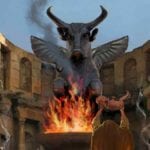 Crime
Crime  Crime
Crime  Movies and TV
Movies and TV 10 Wildly Different Movie Takes on Nuclear War
 Creepy
Creepy 10 Places Where Folklore Is Alive and Well
 History
History 10 Events That Unexpectedly Changed American Life
 Pop Culture
Pop Culture 10 Cases of Grabbing Defeat from the Jaws of Victory
 History
History 10 Common Misconceptions About the Renaissance
 Weird Stuff
Weird Stuff 10 Crazy Things Resulting from Hidden Contract Provisions
 Facts
Facts 10 Unusual Facts About Calories
 Weird Stuff
Weird Stuff 10 Days of Humiliation When the Person Should Have Stayed in Bed
 Humans
Humans 10 Surprising Ways Game Theory Rules Your Daily Life
 Crime
Crime 10 Truly Evil People Who Used Halloween as the Perfect Cover
 Movies and TV
Movies and TV 10 Wildly Different Movie Takes on Nuclear War
 Creepy
Creepy 10 Places Where Folklore Is Alive and Well
Who's Behind Listverse?

Jamie Frater
Head Editor
Jamie founded Listverse due to an insatiable desire to share fascinating, obscure, and bizarre facts. He has been a guest speaker on numerous national radio and television stations and is a five time published author.
More About Us History
History 10 Events That Unexpectedly Changed American Life
 Pop Culture
Pop Culture 10 Cases of Grabbing Defeat from the Jaws of Victory
 History
History 10 Common Misconceptions About the Renaissance
 Weird Stuff
Weird Stuff 10 Crazy Things Resulting from Hidden Contract Provisions
 Facts
Facts 10 Unusual Facts About Calories
 Weird Stuff
Weird Stuff 10 Days of Humiliation When the Person Should Have Stayed in Bed
 Humans
Humans 10 Surprising Ways Game Theory Rules Your Daily Life
10 Mysterious Swords From Legend And History
Swords of renown are the seeds of legend. Fueled by tales of bloodshed and conquest, there have been swords throughout history that have grown to mythical proportions, blending fact and fiction until the two are all but inseparable. We’ve found swords that might in fact be legends brought to life; others have tales so bizarre we have to question their truth. There will never be another weapon that has left a greater impact on history as the sword––some more than others.
10 The Sword In The Stone
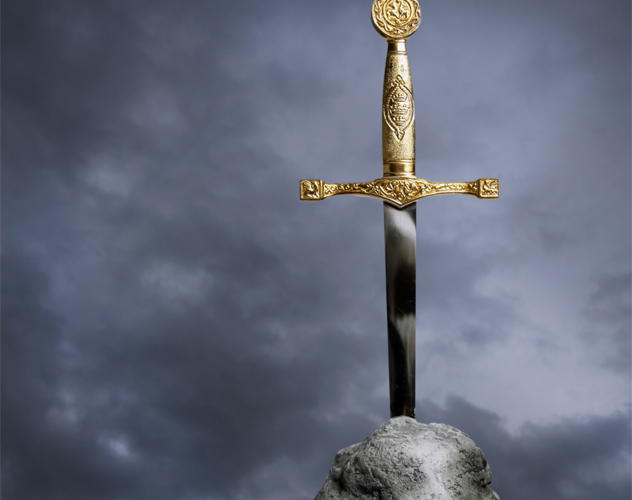
While the Arthurian legend is mostly a product of folklore and myth, there is evidence that its sword in the stone tale might be very real. In a chapel in Monte Siepi, Italy lies an ancient sword embedded in stone that could be the key to deciphering the origin of the legend.
It’s believed that Saint Galgano was a 12th-century Tuscan knight whom Archangel Michael commanded to give up his sinful ways. Arguing that the task would be as difficult as cleaving stone, Galgano attempted to prove his point by breaking his sword on a nearby rock. Legend says his blade cut into the stone as if it were butter. The sword in the stone still rests where Galgano left it behind, along with his worldly ways.
After Saint Galgano was canonized, word of his holy sword spread quickly. The legend of Excalibur predates Galgano, but the addition of the sword in the stone arose shortly after Galgano’s time. It’s theorized that his sword was the true-life inspiration for Author’s sword in the stone.
Of course, that all depends on the sword’s legitimacy. Whether or not the sword in Italy belonged to Galgano has been called into question numerous times. Luigi Garlaschelli of the University of Pavia, however, recently carbon dated the sword to the 12th century––appropriate for Saint Galgano’s lifetime, if not necessarily absolute proof of the story’s legitimacy.
9 The Kusanagi
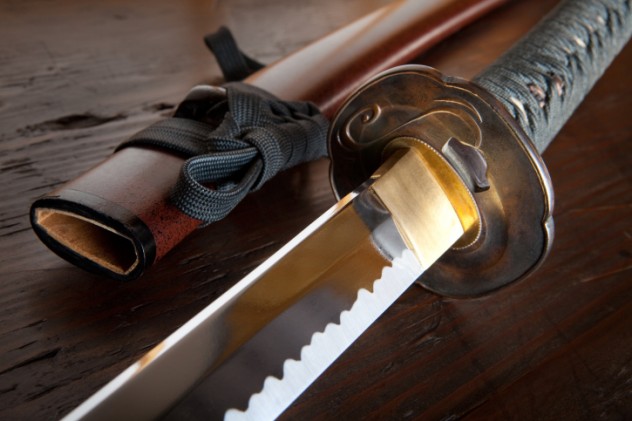
According to legend, the “sword in the snake,” Kusanagi, was found in the body of an eight-headed serpent killed by the god of storms and seas. It’s part of the Imperial Regalia of Japan, icons of the ancient imperial family’s descent from the sun goddess––the symbols of their divine right to rule.
The Kusanagi is said to be housed in the Atsuta shrine in Nagano Prefecture, though it isn’t on public display and hasn’t been seen in centuries. The sword is occasionally brought out for imperial coronation ceremonies, but it’s always kept shrouded in wrappings. Even though it has never been seen, and is only recorded in collections of oral history and pseudohistorical documents, authorities have nevertheless succeeded in keeping the world guessing about the Kusanagi by never officially confirming nor denying its existence.
The only official mention of the sword came after World War II—even though the late Emperor Hirohito disavowed any claim to his divinity, he was also recorded as having ordered the divine regalia’s keepers to “defend them at all costs.”
8 Durandal
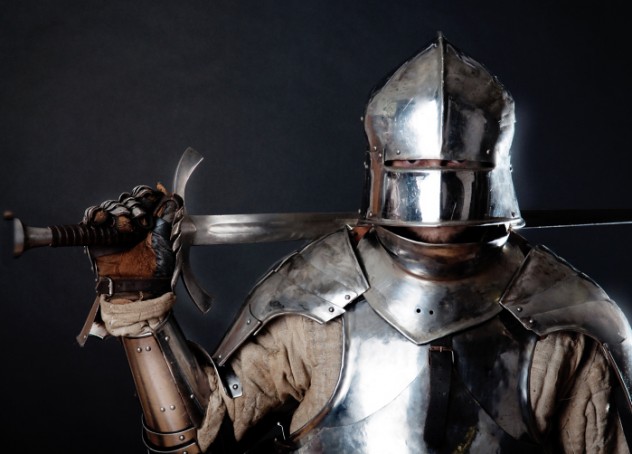
For hundreds of years, a mysterious sword had been embedded in the cliffs above the Notre Dame chapel in Rocamadour, France. The monks say it is Durandal, sword of the paladin Roland. According to legend, Roland hurled the holy blade into the side of the cliff to keep it from being captured by his enemies. Since the 12th century, the chapel has been a destination for sacred pilgrimages. In 2011, the sword was removed by the local municipality and given to the Cluny Museum in Paris for an exhibit.
But is the sword actually Durandal? While the battle where Roland lost his life is a well-documented event, the first mention of Durandal was in “The Song of Roland,” composed hundreds of years later––about the same time the Notre Dame monks began claiming the sword was Roland’s. They likely linked their sword to Durandal since Rocamadour was the starting point for his journey, even though his final battle happened hundreds of miles away in the valley of Roncesvaux. So unfortunately, unless Roland pitched a really good fastball, the sword in the cliff is likely nothing more than a story conjured up by the monks of the chapel. Still, where the sword really came from remains a complete mystery.
7 The Cursed Muramasas
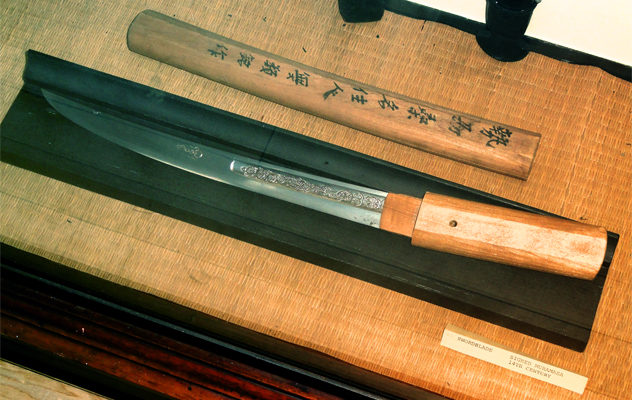
Muramasa was an ancient Japanese swordsmith who, according to legend, prayed that his swords would be “great destroyers.” Because of the exceptional quality of his blades, the gods granted his request and imbued them with a bloodthirsty spirit that—if not sated with battle—would drive the wielder to murder or suicide. There are countless stories of the Muramasas’ wielders going mad or being murdered. The swords were believed to be cursed, and were banned by imperial edict.
The edict was made by Shogun Tokugawa Ieyasu, who condemned the swords after they killed nearly all of his family. His grandfather had fallen to a Muramasa, and both Ieyasu and his father had been wounded by the swordsmith’s blades. Finally, both his wife and his adopted son were later executed by the supposedly cursed swords.
But were Muramasa’s blades really cursed? Likely, Ieyasu’s trouble with the swords began simply because they were extremely popular. Muramasa was not the name of one man, but the entire school of swordsmiths he founded. Quality Muramasa blades had been produced for close to a century and Japan’s warrior class used them often. The fact that Muramasa’s swords were used in so many killings related to the Shogun, while certainly a coincidence, was not exactly remarkable.
6 The Honjo Masamune
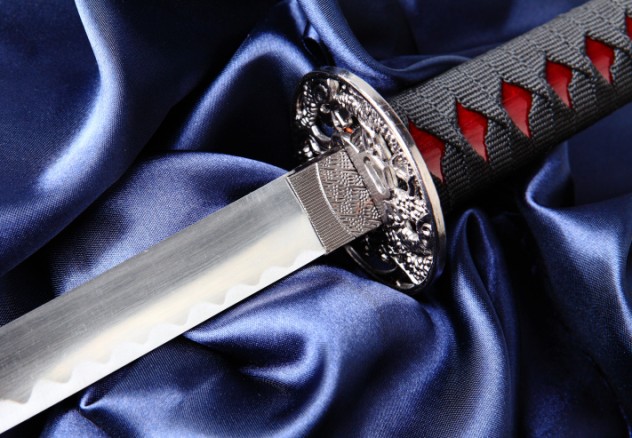
In contrast to Muramasa’s cursed swords are the blades of legendary priest and swordsmith Masamune. Legend has it that Masamune and Muramasa held a competition to decide the superior smith by placing their blades in a stream. While Muramasa’s cut everything it touched, Masamune’s refused to cut anything undeserving, even the air.
While Masamune’s works are valued as Japanese national treasures, one of the swords has never been found. Following Japan’s surrender in WWII, the “Honjo Masamune” was given to an American soldier, Sgt. Coldy Bimore, who most likely took it home with him as a war souvenir. As the mysterious G.I. has never been found, the sword’s whereabouts have likewise been lost. Despite the sword’s doubtless worth (it is potentially worth millions), sword collectors are no closer to finding the legendary lost Masamune than they were the day it disappeared.
5 Joyeuse
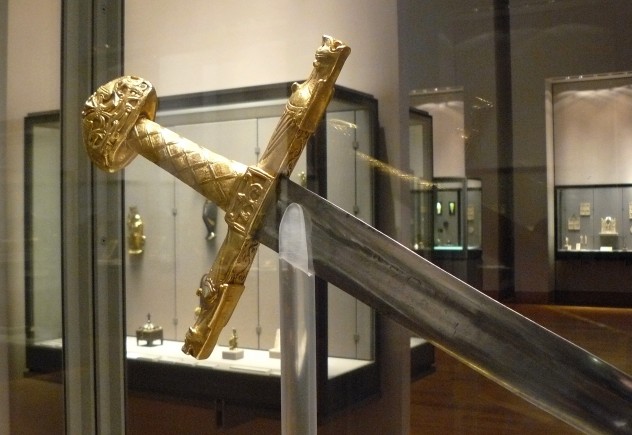
Joyeuse, King Charlemagne’s legendary sword, was said to change colors 30 times every day, and was so bright it outshone the sun. Since as early as 1271, two swords called Joyeuse have been part of French coronation ceremonies. But since both swords can’t be the famed Joyeuse, the mystery of which one is the true sword of the Holy Roman Emperor has lingered for centuries.
The Joyeuse residing in the Louvre has suffered heavy modification over its considerable lifetime. The oldest section is the pommel, which recent tests place sometime between the 10th and 11th centuries. Since Charlemagne died in 813, this puts it just outside the Holy Roman Emperor’s lifetime.
The other contender is the “saber of Charlemagne” housed in the Imperial Treasury in Vienna. It is unknown how the sword became part of the French Imperial Regalia, but the saber is dated to the early 10th century—closer than the Joyeuse, but still just after the time of Charlemagne’s legendary sword. The saber was probably fashioned by Hungarian swordsmiths, which opened the door for additional legends of it being the famed “sword of Attila,” which was said to have been given to Attila the Hun by Mars, the god of war. Sadly, this isn’t really historically plausible either.
4 St. Peter’s Sword
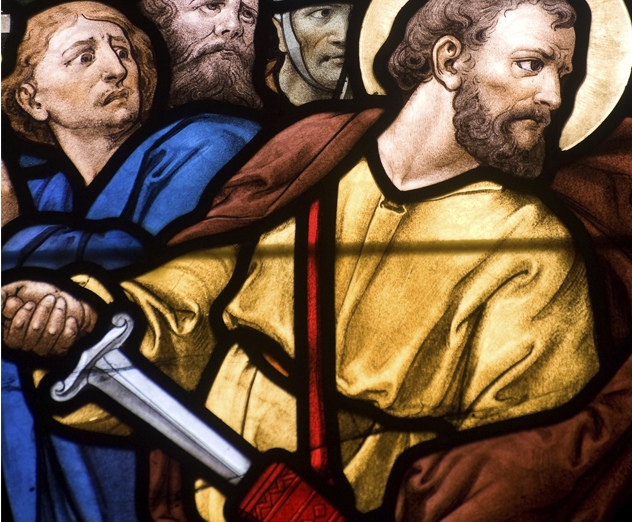
There are several legends about the sword used by Saint Peter when he cut off the ear of the servant to the high priest in the garden of Gethsemane. English lore has it brought to England by Joseph of Arimathea along with the Holy Grail. In 968, however, a sword was brought to Poland by Bishop Jordan—a sword which he claimed was the actual sword of St. Peter. The Bishop’s sword, considered the true relic, remained in Poland and was eventually moved to the Archdiocese Museum in Poznan.
Did the mysterious sword belong to Saint Peter? There are claims that the sword could have been made in the Eastern borderlands of the Roman Empire in the first century, but there is little evidence to substantiate them except the (perhaps misplaced) faith of those who want to believe the sword is a genuine relic. The sword in Poland is a falchion—a type of sword likely not in use during Saint Peter’s time. Metallurgy tests have also dated it to long after the saint’s death.
3 The Wallace Sword
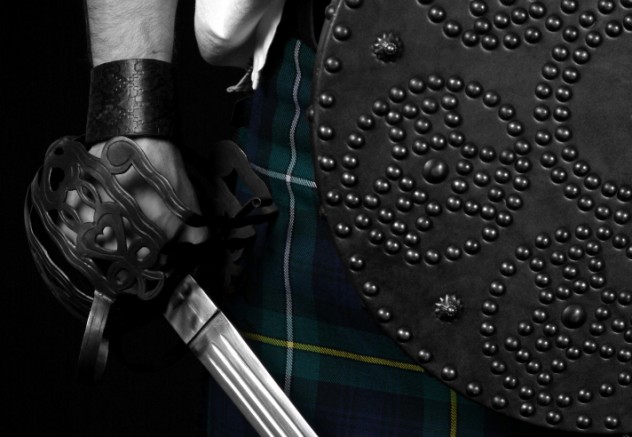
Legend has it that William Wallace––the titular character of Mel Gibson’s Braveheart––used human skin for his sword’s scabbard, hilt, and belt. The flesh’s donor was said to have been Hugh de Cressingham, treasurer of Scotland, whom Wallace had flayed after defeating him in the battle of Stirling Bridge.
One version of the legend speaks of Wallace using one strip of Cressingham for his sword belt. Other accounts say Wallace and his men used Cressingham’s skin for saddle girths. The legend spread even further when King James IV sent the Wallace sword to have its scabbard, belt, and pommel replaced with something more befitting a sword of such stature. The sword as it is now, in the National Wallace Monument, bears the replacement parts.
Did Wallace have a Frankensword? While Cressingham was most definitely flayed, accounts have Wallace using the unfortunate tax collector’s skin only for his sword belt, not the actual sword. The story also came from the English side, and was likely embellished to make the Scottish hero look like a barbarian. Still, we can certainly understand Wallace’s grudge against tax collectors. It might not be a stretch to say he used the skin from one to decorate his sword. As with many legends, the truth has been lost to time.
2 The Sword Of Goujian
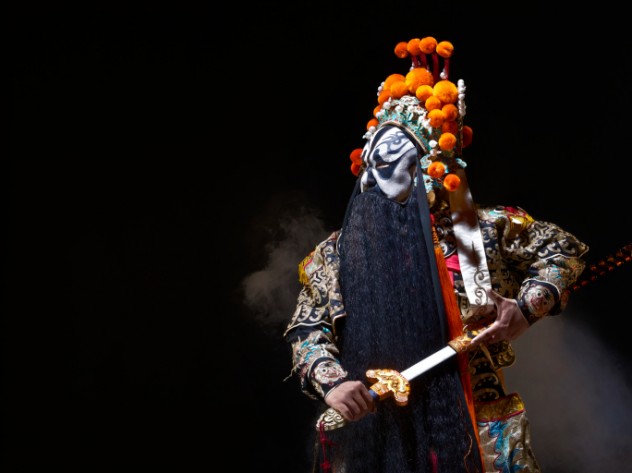
In 1965, a remarkable sword was found in a damp tomb in China—despite being over 2,000 years old, there wasn’t a spot of rust on it. The blade was so untouched by time it even drew blood when one archeologist tested its edge on his finger. Besides its unearthly resilience, the craftsmanship of the etchings was also unbelievably detailed for a sword forged so long ago. It was, for the time, a complete mystery.
Further study of the etchings concluded that it was a sword belonging to the Yue king, Goujian, and is believed to be the legendary blade mentioned in The Lost History of Yue. According to the text, when King Goujian had his sword collection appraised, there was only a single sword of merit. This sword was so magnificent it was said to have been made with the combined efforts of Heaven and Earth.
How did the sword stay in such excellent condition for over 2,000 years? Tests show the swordsmiths of Yue had reached such a high level of metallurgy they were able to incorporate rust-proof alloys into their blades. Their swords were also treated with rust-resistant chemicals, helping them survive the ages relatively unblemished. In addition, and in a stroke of brilliant luck, the scabbard of this particular blade was nearly airtight, which prevented oxidation and allowed the legendary sword to be found in such pristine condition—even two millennia after it was enclosed in the tomb.
1 The Seven-Branched Sword
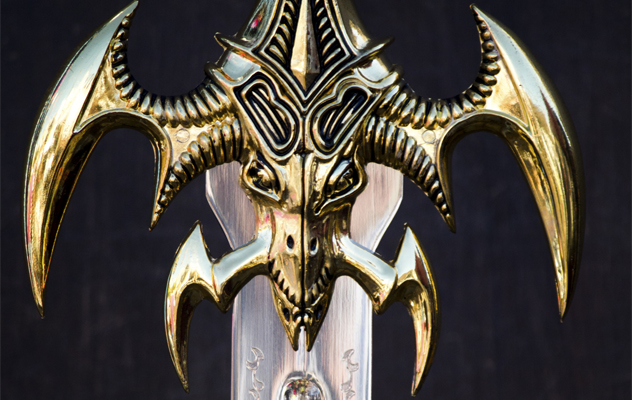
In 1945, a mysterious sword was found in Japan’s Isonokami shrine. The sword was of exceedingly unusual make, with six protrusions branching out from its sides (the tip is considered its seventh). The sword was in poor condition, but a faded inscription could be made out along the blade. The exact translation has been questioned numerous times, but what is clear is that the sword was a gift from a Korean king to a Japanese monarch.
This matched a sword found in the Nihon Shoki, a folklore-infused historical document cataloging the early history of Japan. If this was the same seven-branched sword given to a semi-mythical shaman empress, Jingu, it would serve as an important keystone marking where legend became fact.
The dating on the blade matched reliable sources in China, Korea, and Japan. The Isonokami shrine itself was also mentioned in other documents dating from the time of the Nihon Shoki, so the sword could well have been left there since ancient times. Scholars now believe the seven-branched sword is the actual sword from the legend, giving the shaman empress Jingu an authentic place in history.
+ La Tizona
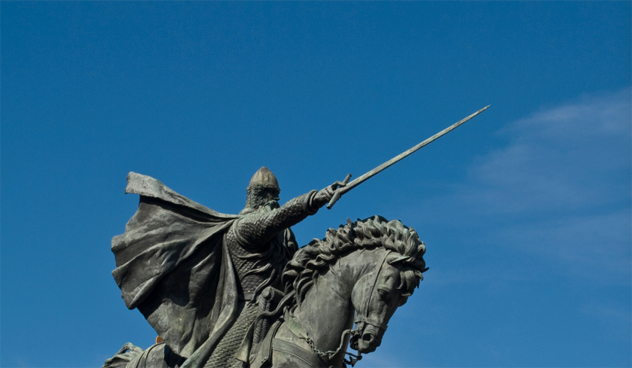
La Tizona was the sword of legendary hero El Cid, who fought for both Christian and Muslim armies in Spain. In a museum in Burgos, Spain, there is a controversial sword which the museum claims is none other than El Cid’s own blade.
The sword was said to have been given to the Marquis of Falces by King Ferdinand in 1516. It was then passed down through his family until it was given to the Madrid Military Museum in 1944. There it remained, its legitimacy unchallenged, for sixty years until the current Marquis sold it to the Castile and Leon region for display in the Museum of Burgos.
Upon its sale, the Culture Ministry––which is connected to the Military Museum––launched a scholarly attack against the sword, saying it was forged centuries after El Cid’s lifetime. Castile and Leon launched a counterattack, upholding the sword’s authenticity in a different study and saying the Ministry was only jealous because it lost the sword.
In the epic poem, the “Lay of El Cid,” La Tizona was said to have terrified unworthy enemies into a swoon at mere sight. The sword in Burgos may not have made any museum visitors swoon, but it certainly seems to have the power to spark controversy. The sword’s authenticity remains a fierce debate.
+ The Ulfberht
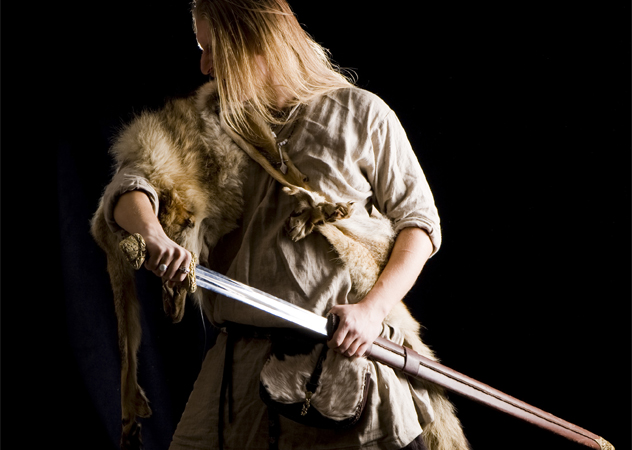
Though mostly forgotten in modern times, there was a type of sword prized by Vikings that far exceeded any European weapon of its day. The Ulfberht swords were a thousand years ahead of their time, and wielded only by the elite of Viking warriors.
What made the Ulfberht blades so advanced? While most Viking blades were found to have been composed of slag-ridden, low-carbon steel, these blades’ metal was comparable to the strength of modern steel. They were inscribed with the signature “+ULFBERH+T,” and their like would not be seen again in Europe until the industrial revolution. The mystery was how the Vikings created these blades while the rest of Europe was still making steel that could shatter like glass.
Scholars now believe the secret to the Ulfberht blades was crucible steel, which the Vikings imported from Iran and Afghanistan. We can’t be certain who Ulfberht was––or even if he was just one man––but he was the only European smith of his time to work crucible steel. And that made his swords arguably the most advanced weapons of their time and place, ever.
Living in a Japan that’s not Tokyo, Nathan unearths the gems hidden in Japan’s rich cultural soil in his blog, www.introvertjapan.com. He also haunts Twitter at https://twitter.com/IntrovertNathan.


